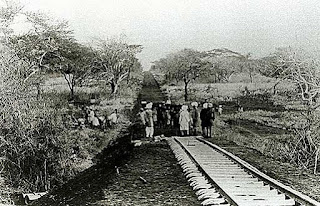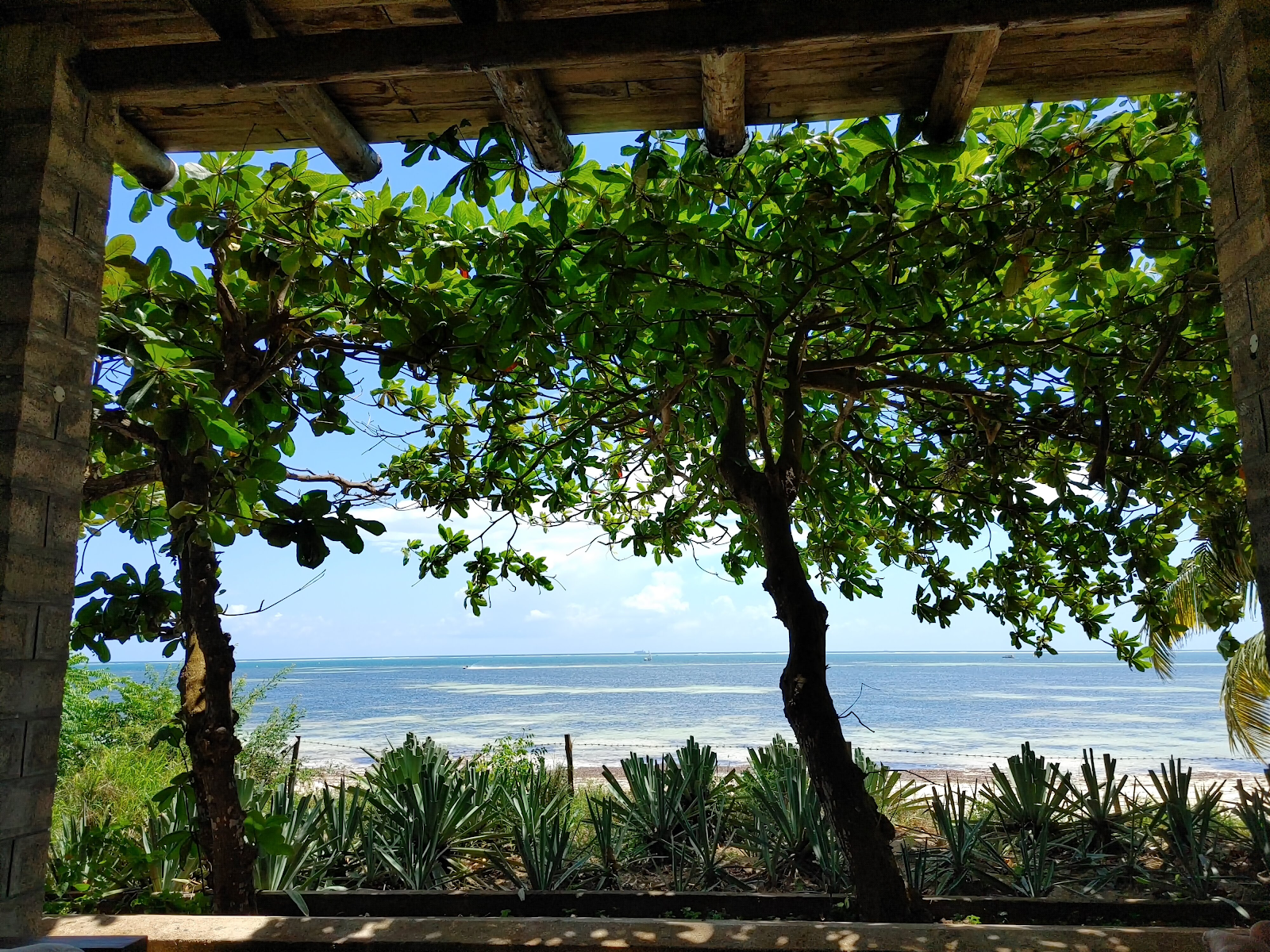Travelling to Kenya
 |
Indian Workers Building the Uganda Railway
Image Courtesy Sikhnet |
My journey started on a cold Winnipeg morning. I had called a cab the night previous to get to the airport for 3:30am. My driver asked, "where are you heading?", to which I replied "Kenya". The driver was a turbaned Punjabi man, much like myself, who quickly gave me a puzzled look. Through the rearview mirror the driver questioned, "Kenya?". He then quickly in punjabi, "brother...there are Indians in Kenya?"
I then began to tell him about the history of how the British used Indian workers for cheap labour, while building the railway from Uganda to Mombasa. I found out the driver was also a former teacher in India and came to Canada several years ago.
He was quite fascinated by this history, and told me he used to teach social studies in Punjab. He needed to drive a cab to support his family when he immigrated and asked me many questions about how to become a teacher in Canada.
When we arrived at the airport I paid for my trip and we exchanged numbers so we could chat further about his journey to become a teacher.The Flight
I boarded my flight to Toronto at 7am and arrived about two and a half hours later. Upon arrival I had to race to the opposite side of the airport, so that I could catch my flight to Ethiopia. I passed through security another time before even getting into the International terminal. The line for boarding was so long and I didn't have time to fill up my water bottle. We boarded by zone number, and I happened to be one of the last zones called.
 |
Pearson Airport Ethiopian Airways Gate
(Image Courtesy: Gursevak Kasbia) |
I met two really nice people on the plane. One was a student who had graduated from Memorial University and was working for Newfoundland Power. The other was a business consultant, who was visiting his daughter in Winnipeg and returning to Zambia. We had some deep discussions about everything from cricket to corruption in Africa. I watched some travel videos about different places in Ethiopia to visit and tried to learn some Kiswahili through the app provided on the multimedia screen.
I was treated to some wonderful Ethiopian cuisine. After being in the air for over 14 hours, we landed in Addis Ababa, Ethiopia. I had never been in this airport and when we arrived it was quite warm. I had to remove my sweater, change into a t-shirt and drink some water to re-hydrate myself.
I quickly realized there were no public water fountains, so I had to buy a water bottle. Then i realized that I had no Ethiopian currency with me. I managed to use a five-dollar Canadian bill to purchase a bottle from a vendor who had relatives who lived in Canada. I then boarded the next flight for Nairobi, and arrived about an hour an a half later.
Many Changes
I hadn't seen Nairobi in several years, thus when my sister-in-law was driving us home from the airport, I didn't recognize the relatively newly-built expressway. The tall towers being built on the way were a stark reminder of the progress being made in Kenya.
 |
| Nairobi Expressway: Image Courtesy Gursevak Kasbia |
We arrived home only to see how multiple buildings now surrounded the home where my wife grew up. I was able to head out and see just how much things had changed, including some new malls that had been built, the southern bypass which we used to head towards Nakuru. We were able to get through the city with great ease using the newly created expressway. New grocery chains along with renovated recreation complexes contributed to the cosmopolitan atmosphere. Travel
Nairobi:
Our first few days were spent in Nairobi with our family. We started by visiting the Daphne Sheldrick Elephant orphanage and the Giraffe Centre. Both were fascinating places to visit, as the Sheldrick Elephant orphanage was home to baby elephants who may have lost their mothers due to drought, landslides or poaching. We learned about how these Elephants are released into Tsavo National park and how many conservation activities are helping them be reintroduced to their natural habitat.
 |
Daphne Sheldrick Elephant orphanage.
Image Courtesy Gursevak Kasbia
|
 |
| Giraffe Centre- Image Courtesy Gursevak Kasbia |
Up Country:
We stayed a few nights in Nairobi before heading upcountry to Nakuru. It was a beautiful drive as we passed the rift valley, part of the valley known as the cradle of mankind.
Nakuru is known for its flamingo population and Lake Nakuru National Park. We were able to visit Naivasha, where many flower and fruit farms supply many European grocers with their produce and flowers. We also stayed a few nights at Lake Naivasha, home to many hippopotamus.
 |
Farmers picking crops at a local fruit and vegetable growing facility- Image Courtesy
|
 |
A Zebra Crossing at a Zebra Crossing (
Image Courtesy Photography by the Hill) |
Mombassa
The Kenyan port city of Mombassa is nothing short of a tropical paradise. We decided to take the train which permitted us to pass a famous Sikh Temple ( Makindu) and see Amboseli National Park as well.
Amboseli National Park: Can you spot the Elephant? (Image Courtesy: Gursevak Kasbia)
Mombassa is situated on the warm waters of the Indian Ocean, and is a significantly lower altitude than Nairobi. The city features large scale resorts, great restaurants and warm weather you would not find in Canada during our cold winter months. We stayed with relatives who live adjacent to the beach. We were treated daily to fresh coconut juice, mangoes, papaya and passionfruit.
Mombassa Coastline (Image Courtesy : Gursevak Kasbia)
Travellers resort was where we were able to sit poolside while playing some water polo and enjoy lovely cuisine.
One evening we were graciously hosted on the Tamarind dhow. These dhows historically were ships used to transport people from many different places near east Africa. This includes India, where many Kenyans with Indian origin may have arrived over a century ago.
Tamarind Dhow Replica Boat (Image Coutesy: Gursevak Kasbia) Nairobi National Park: A Safari in a City
I had really wanted to go on a Safari but time was extremely limited. On a whim, we decided to head out in the early hours of the morning to see if we could explore Nairobi National Park. It is the only National park in the world located within a capital city and is run by the Kenya Wildlife Service. We packed some warm Kenyan tea and local snacks and headed out to see what we could find. As luck would have it, we were able to spot a baby rhino with its mother, giraffes, water buffalo and came within feet of a pride of lions. As we left the park, we were humbled by an art installation commemorating park rangers who tried saving many elephants from poaching, and where ivory was burned as a symbol to deter future poachers.
 |
Nairobi National Park - Image Courtesy
Gursevak Kasbia |
Photo References:
Home - Nakuru County Online Business Directory | Company Listings in Nakuru - Funduo Fruit Farm
Sikh Heritage in East Africa | SikhNet-
My Trip to Kenya by Gursevak Kasbia











Comments
Post a Comment